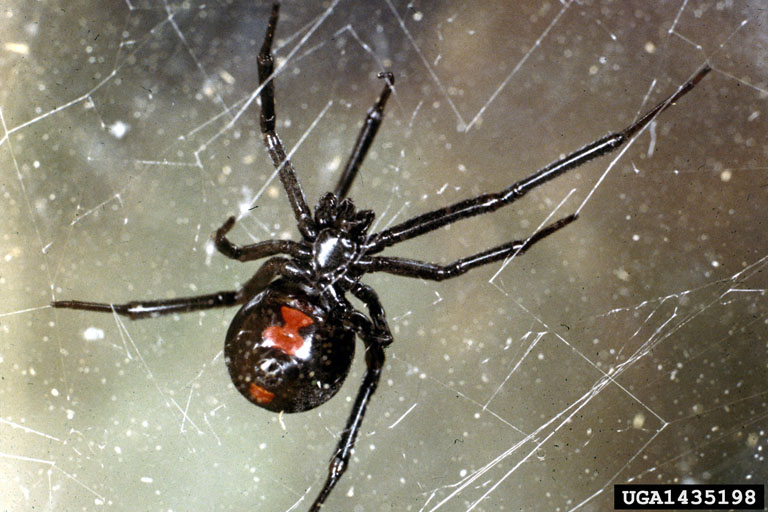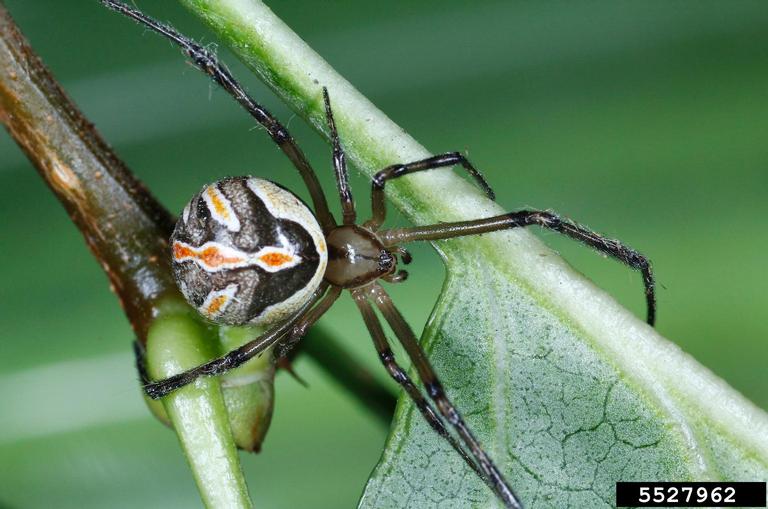Black Widow Spider
Latrodectus hesperus
Identification
- adult female is shiny black with a red hourglass on the underside of the abdomen (there are beneficial lookalikes without the red hourglass)
- immature females have a pale brown to black body with white to orangish banding; they get progressively more solid black as they molt toward adulthood
- males are about 1/3 the size of females and are pale brown with white markings, resembling immature females
Nesting Habits
- prefer pre-existing holes in dark, undisturbed areas
- hide during the day and are in their cobwebs at night
- common around building foundations, rock piles, wood piles, outbuildings, water meter/irrigation boxes and around exterior lighting
Diet
- insects and spiders
Significance
- can be a serious health risk, especially to children and elderly people
- bite can cause pain, nausea, cramping or death (rare)
IPM Recommendations
- Minimize nesting habitat around property.
- Seal exterior cracks and crevices to reduce hiding places.
- Regularly vacuum individuals and webs.
- Reduce clutter indoors and outdoors.
- Install tight-fitting door sweeps.
- Install tight-fitting screens in windows.
- Reduce other insects that serve as food.
- Change exterior lighting to sodium vapor bulbs.




